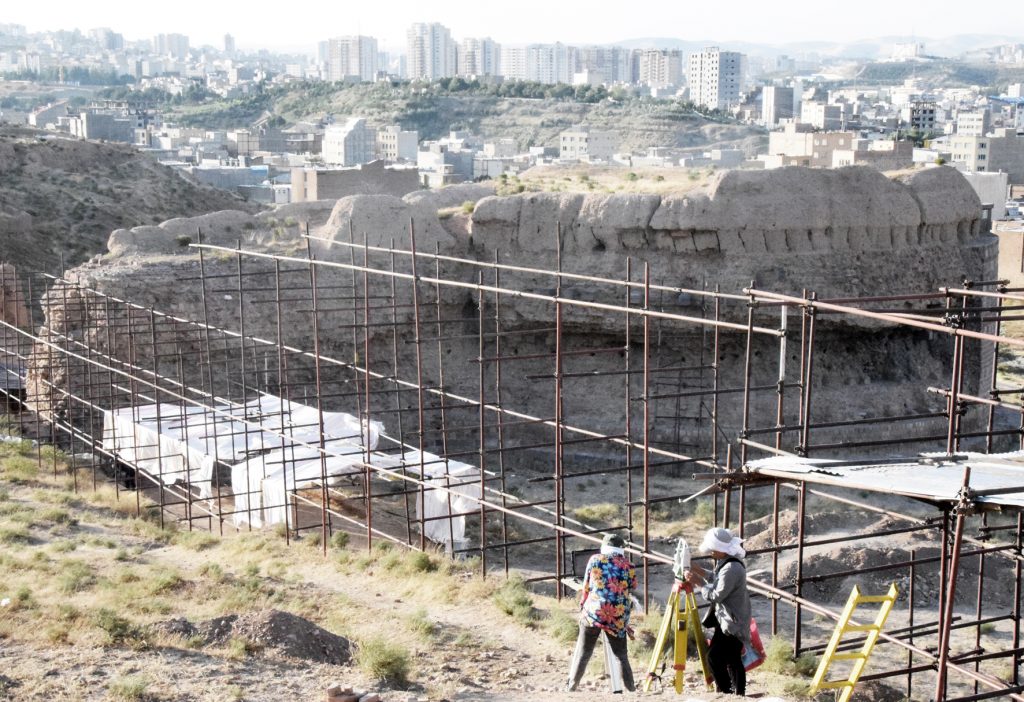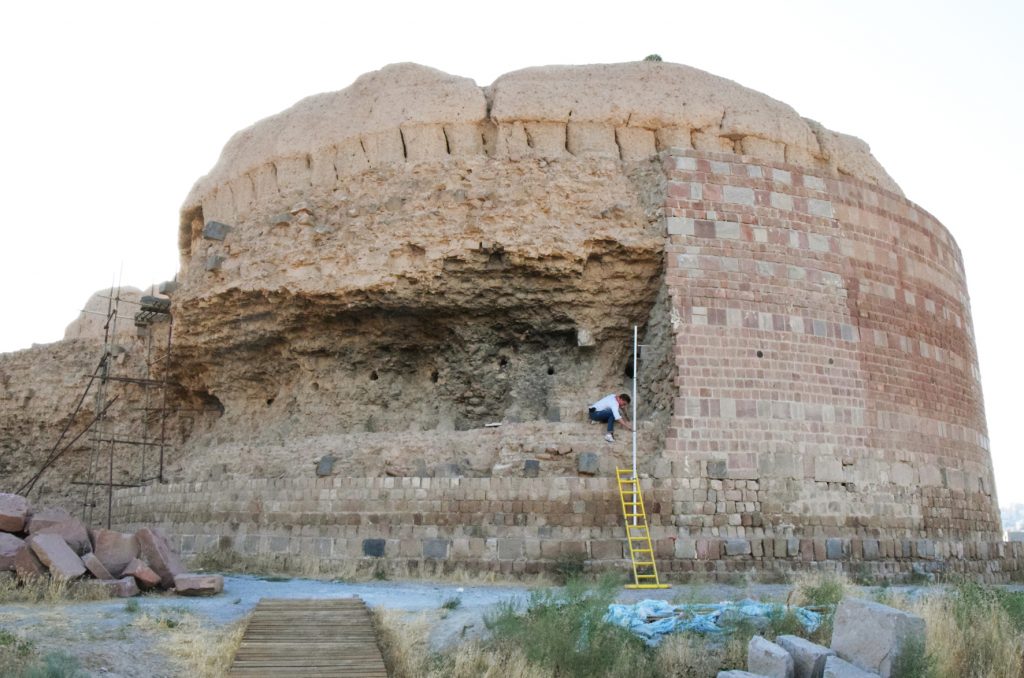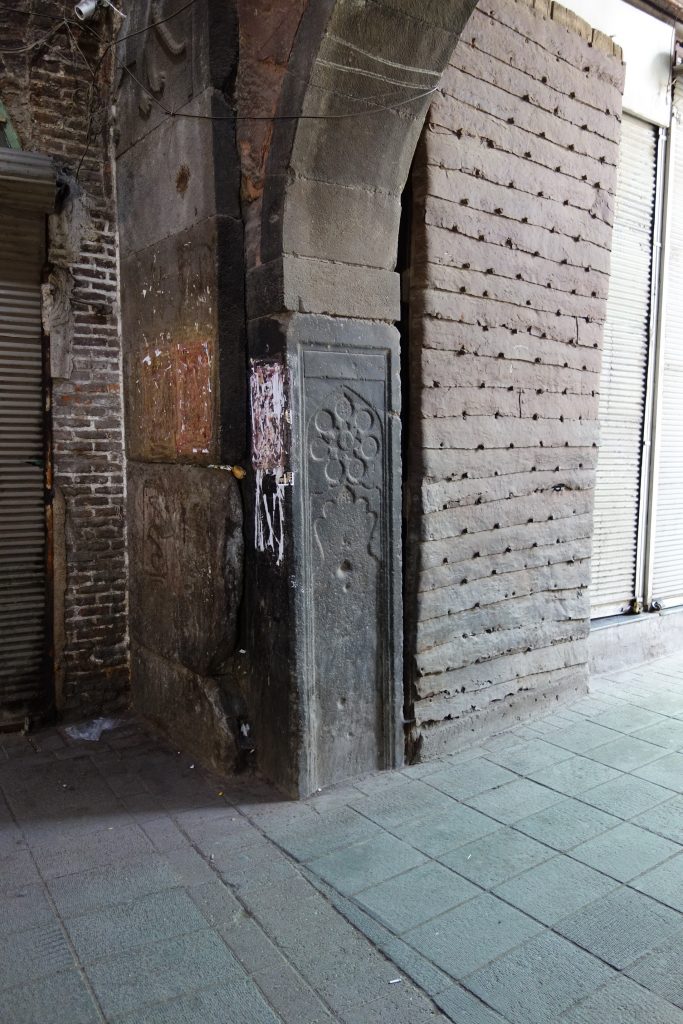English version below. 1307, sagt das Gründungsdokument, ist auf Weisung des mongolischen Khans Ghazan in Tabriz eine islamische Akademie entstanden, um die Elite des Landes zusammenzubringen. Geplant und verwirklicht wurde der Komplex vom jüdischen Wesir Rashid al-Din. Es entwickelt sich ein lebhaftes Stadtviertel mit Bazar und Handwerk. Die heute sichtbaren Ruinen datieren in das 16.-18. Jh.; Archäologen suchen nun nach Spuren der alten Gründung. Das Projekt wird gemeinsam mit der Universität Bamberg durchgeführt.

The medivial ruins are located at the northern bend of Tabriz,
(Foto: winterfuchs).

Restoration works at the „Southern Bastion“, the darker basalt stones are tomb stones of ilkhanid date.
(Foto: winterfuchs).

The dark Ilkhanid tomb stones re-used as stone building material are distributed throughout the ancient Bazaar of Tabriz.
(Foto: winterfuchs)
1307, was the founding date of the Great Rab-e Rashidi, a building program of the ruling Ilkhanid Ghazan Khan. Written down by the jewish Wesir Rashid al Din, the document describes deliberately the development of an agile city quarter that comprised a huge endowment complex with several academic institutions, handicraft area – where – according of historical sources – the earliest exemplars of the Shamaneh was produced, and a bazaar. The nowadays visible ruins are the remains of a later erected castle dated into the 16-18th century. Recently, Iranian-German archaeological researches were continued in cooperation with the Tehran branch and the University of Bamberg.
Beitrag von: Judith Thomalsky